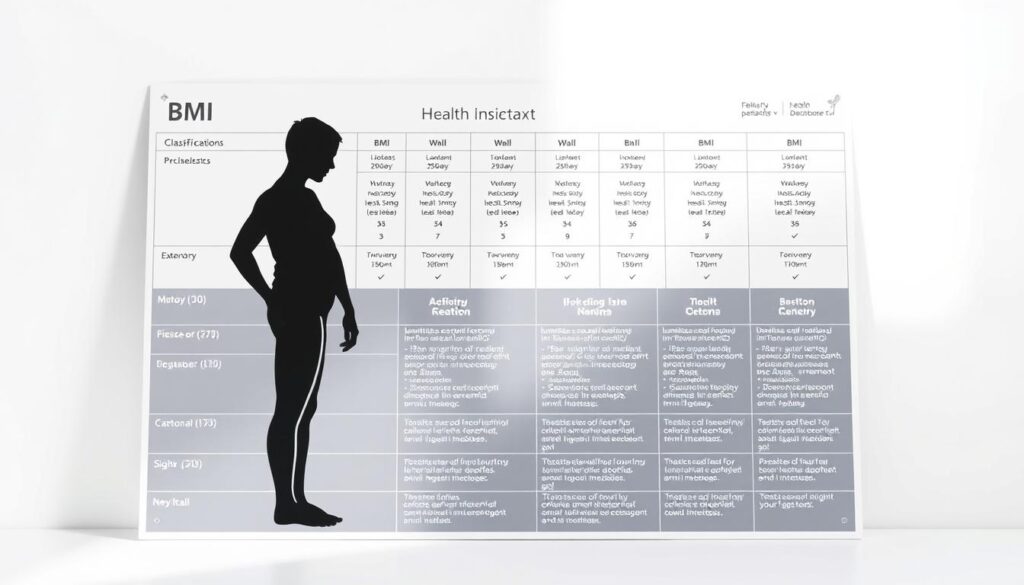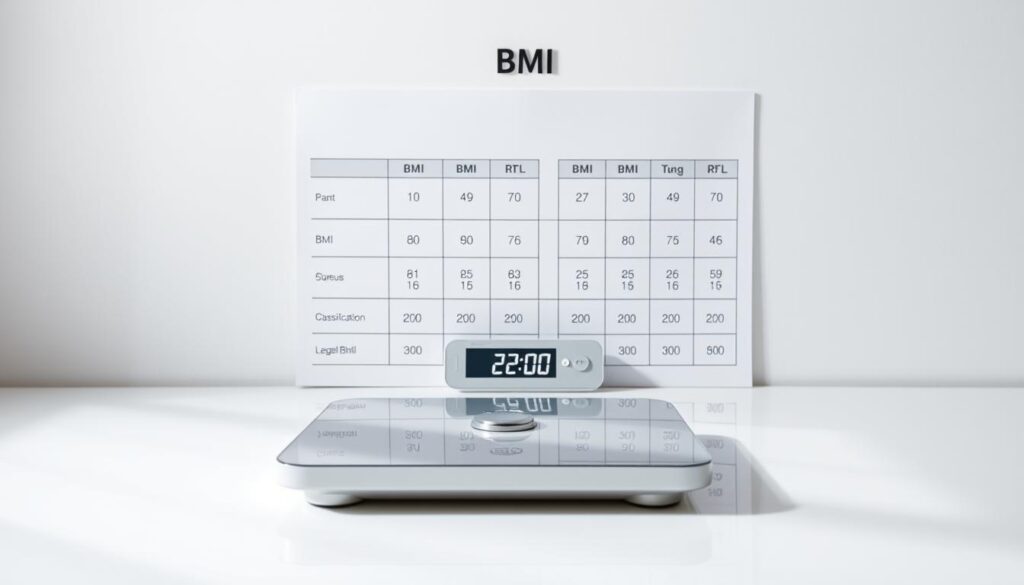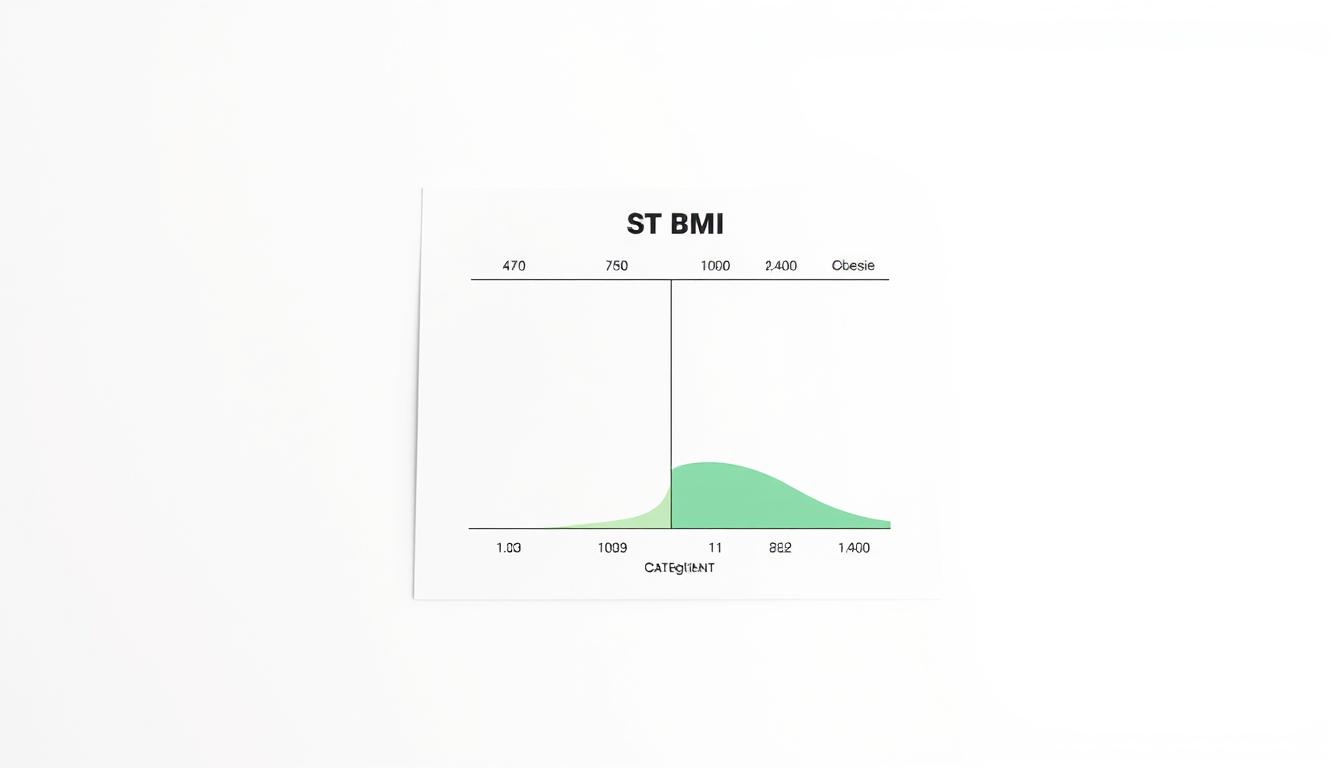Have you ever wondered why two people with the same weight and height can have vastly different health risks? The answer lies in a simple yet powerful tool that goes beyond basic measurements: body mass index. While scales measure pounds, this calculation reveals how your weight interacts with your height to estimate body fat—a key factor in understanding overall wellness.
We use this screening method by dividing weight in pounds by height in inches squared, then multiplying by 703. This formula categorizes results into ranges like “healthy” or “overweight,” helping identify potential risks for conditions like heart disease. But it’s not perfect—it doesn’t distinguish between muscle and fat, which explains why athletes might score higher despite being fit.
Why does this matter? Nearly 74% of American adults face weight-related health challenges. By learning to calculate and interpret this metric correctly, you gain insights into your unique health profile. We’ll show you how to use it wisely, combining CDC guidelines with practical tips to avoid common pitfalls.
Key Takeaways
- Body mass index estimates body fat using weight and height measurements
- The standard calculation involves pounds, inches, and a multiplier of 703
- Results fall into categories like healthy (18.5–24.9) or overweight (25+)
- It’s a screening tool—not a diagnostic—for health risks like diabetes
- Muscle mass and body type can affect accuracy for some individuals
Understanding BMI and Its Health Implications
Healthcare professionals rely on a simple numerical value to assess potential health risks tied to body composition. This measurement compares weight pounds to height inches, creating a snapshot of how mass distributes across your frame.

What Is This Measurement and Why It Matters?
This screening tool helps identify patterns linked to chronic conditions. Those scoring below 18.5 often face nutritional deficiencies, while results above 30 correlate with higher risk of type 2 diabetes and heart disease.
Health Risks Linked to Various Levels
Categories matter. People in the “overweight” range (25-29.9) have 50% greater chances of developing hypertension than those in the 18.5–24.9 bracket. Extreme highs or lows can signal urgent needs for lifestyle changes.
When Numbers Don’t Tell the Full Story
Muscle weighs more than fat—a reality this calculation ignores. Athletes and seniors often get misleading results. For accurate effective weight management strategies, experts recommend combining this metric with waist measurements and blood tests.
While useful for population studies, individual assessments require deeper analysis. Body type, age, and fat distribution patterns all influence actual health risks beyond basic numerical ranges.
How to Calculate Your BMI: A Step-by-Step Guide
Unlock insights into your wellness with two straightforward methods. Whether you prefer crunching numbers yourself or using digital tools, we’ll walk through both approaches to help you gauge body composition effectively.

Manual Calculation Using Pounds and Inches
Grab a calculator and follow these steps for precise results. First, multiply your weight in pounds by 703. Next, divide that number by your height in inches squared. Let’s break this down with an example:
- 180 lbs × 703 = 126,540
- 65 inches × 65 inches = 4,225
- 126,540 ÷ 4,225 = 29.9
This result places someone in the higher range, indicating potential health risks worth discussing with a doctor. Remember, this method works best for adults with average muscle mass.
Using Online BMI Calculators and Tools
Digital solutions simplify the process while maintaining accuracy. Reputable calculators from health organizations automatically apply the 703 multiplier and category thresholds. Simply enter your measurements—most tools display results instantly alongside healthy weight ranges for your height.
Many platforms now include optional fields for age and activity level, providing more personalized insights. As one nutrition expert notes:
“Combining manual calculations with digital tools offers the clearest picture of body composition trends over time.”
Whether you choose pencil-and-paper math or instant online results, regular tracking helps identify patterns. Pair these numbers with waist measurements and body fat analysis for a complete view of your health.
BMI Formula for Adults: Key Insights and Considerations
Numbers on a chart only tell part of your health story. While screening tools help identify patterns, understanding what those values actually mean requires looking deeper into body composition and lifestyle factors.
Interpreting the Results: Body Fat, Muscle Mass, and More
A score between 18.5–24.9 typically indicates normal weight ranges. However, this doesn’t guarantee low health risks. Studies show people with higher muscle percentages might register elevated numbers despite having minimal body fat.
| Range | Category | Common Health Considerations |
|---|---|---|
| <18.5 | Underweight | Nutritional deficiencies, weakened immunity |
| 18.5–24.9 | Healthy | Lower disease risk, balanced energy |
| 25–29.9 | Overweight | Increased blood pressure, joint stress |
The body mass index works best when combined with waist measurements. Research reveals abdominal fat poses greater cardiovascular dangers than fat stored elsewhere—even at identical numerical values.
Practical Tips for Maintaining a Healthy BMI
Small changes create lasting impacts. Try these strategies:
- Swap sugary drinks for water or herbal tea
- Add 30 minutes of daily movement (walking counts!)
- Track progress using both scales and clothing fit
As the American Cancer Society advises:
“Focus on sustainable habits rather than rapid weight shifts. Gradual improvements in diet quality and activity levels yield better long-term results.”
Remember, screening tools serve as starting points—not final verdicts. Pair numerical data with blood work and professional guidance for a complete health picture.
Conclusion
Understanding your body’s unique needs starts with reliable tools. The body mass index offers a practical way to assess weight-height relationships and potential health risks. By combining pounds, inches, and the 703 multiplier, this calculation helps identify patterns linked to body fat levels.
Regular monitoring matters. While results can’t distinguish muscle from fat or account for individual body types, they serve as valuable screening markers. Organizations like the CDC recommend pairing these numbers with waist measurements and blood work for fuller insights.
Take action today. Use our instant assessment tool to track your progress. Small changes in diet and activity often yield significant improvements—whether you’re aiming to reduce risks or maintain current wellness.
Remember: No single metric defines health. Use this index as one piece of your self-care puzzle, alongside professional guidance and personalized strategies. Knowledge empowers better choices—start yours now.


